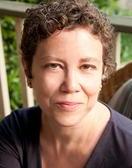
Glorious Color quilts by my cousin, Liza Prior Lucy
In seven years of writing this interfaith blog, I have posted many essays on a number of spring Jewish and Christian holidays: Purim, St Patrick’s Day, Passover, Easter. But the complex, interlocking quilt squares of Generation Interfaith now go far beyond Judaism and Christianity. Speaking in Chicago this week, I met a woman from a Jewish and Christian interfaith family with a Hindu partner, and a man from a Jewish and Christian interfaith family with a Muslim partner. Increasingly, I see the world of interfaith families, not as a Jewish/Christian binary, but as vibrant pieces bound together into a greater design, and traced with embroidery that winds across the pieces.
My book Being Both is devoted to the idea that interfaith children, in particular, benefit from exploring that whole quilt through interfaith education. But actually, all of us in extended interfaith families (and increasingly, that is most of us) benefit from interfaith education. Meanwhile, with political demagogues busy stirring up ugly religious intolerance in this election season, now is the time for every American (and every world citizen), whether or not we have extended interfaith families, to do a better job of educating ourselves about the religions around us.
Just in the next two weeks, we have a dense schedule of religious holidays, providing many opportunities to celebrate with interfaith family, and interfaith friends. If you don’t have family and friends who will invite you over, check out my Beacon Press colleague Linda K. Wertheimer‘s suggestions on how to get out and visit local houses of worship. And if you don’t live near any temples or mosques, there is always the free online courses from Harvard’s Religious Literacy Project.
Below, I have written up a quick list of just some of the religious holidays in the remainder of March. Note the ancient connections many of them have to the spring equinox, and possibly, to each other. And notice how many of these spring festivals are now celebrated by people of multiple religions. My belief is that we are all religious syncretists, tied to the religions that came before us, and the religions that surround us. And so as part of Generation Interfaith, I celebrate these connections:
March 17, St Patrick’s Day. Catholic commemoration of the Feast Day of St Patrick, primarily celebrated by Irish-Americans with parades, drinking, and the wearing of the green, as a way to connect with Irish culture. Now celebrated in America by people of many religions. Possible historical connection to Ostara.
March 20, Ostara. Modern Pagan and Wiccan commemoration of the spring equinox and Eostre, the Saxon lunar goddess of fertility. Celebrated with planting of seeds and nature walks. Possible historical connections between Eostre, Easter, Passover, and Norooz.
March 20, Palm Sunday. Christian commemoration of the arrival of Jesus in Jerusalem, celebrated with church services and processions with palm fronds. Among Indian Christians, the Hindu practice of strewing flowers such as marigolds has been adapted for Palm Sunday.
March 21, Norooz. Zoroastrian/Bahai/Persian celebration of the New Year on the spring equinox. With roots in ancient Iran, it is celebrated by many people of all religions throughout the Balkans, Caucasus, Central and South Asia, and the Middle East with spring cleaning, flowers, picnics, feasting, and family visits. Possible historical connection between Norooz and Purim.
March 23, Holi. Hindu commemoration of the arrival of spring and love, celebrated with bonfires, throwing powdered color pigments and water on each other, music, feasting, forgiving debts, repairing relationships, and visiting. Popular even with non-Hindus in Asia, and increasingly throughout the world.
March 23, Magha Puja Day. Buddhist commemoration of Buddha delivering the principles of Buddhism, on the full moon. Celebrated in Southeast Asia with temple visits, processions, and good works.
March 24, Purim. Jewish commemoration of the Biblical story of Esther in ancient Persia, celebrated with costumed reenactments, three-cornered pastry (hamantaschen), drinking, and charity. There may be a historical connection between Norooz and Purim.
March 24, Maundy Thursday – Christian commemoration of The Last Supper. There may be a historical connection between The Last Supper and Passover.
March 24, Hola Mohalla. Sikh celebration including processions, mock battles, poetry reading, music. There is a historical connection between Holi and Hola Mohalla.
March 25, Good Friday. Christian commemoration of the Crucifixion of Jesus, with church services and fasting.
March 27, Easter. Christian commemoration of the Resurrection of Jesus, celebrated with church services, family dinners, baskets of candy for children. Fertility imagery including bunnies and eggs may have a historical connection to Eostre, and the spring equinox.
March 30, Mahavir Jayanti. Jain commemoration of the birth of Mahavira, celebrated with temple visits for meditation and prayer, decoration with flags and flowers, and charitable acts.

Glorious Color quilts by my cousin, Liza Prior Lucy
Susan Katz Miller’s book, Being Both: Embracing Two Religions in One Interfaith Family is available now in hardcover, paperback and eBook from Beacon Press.

